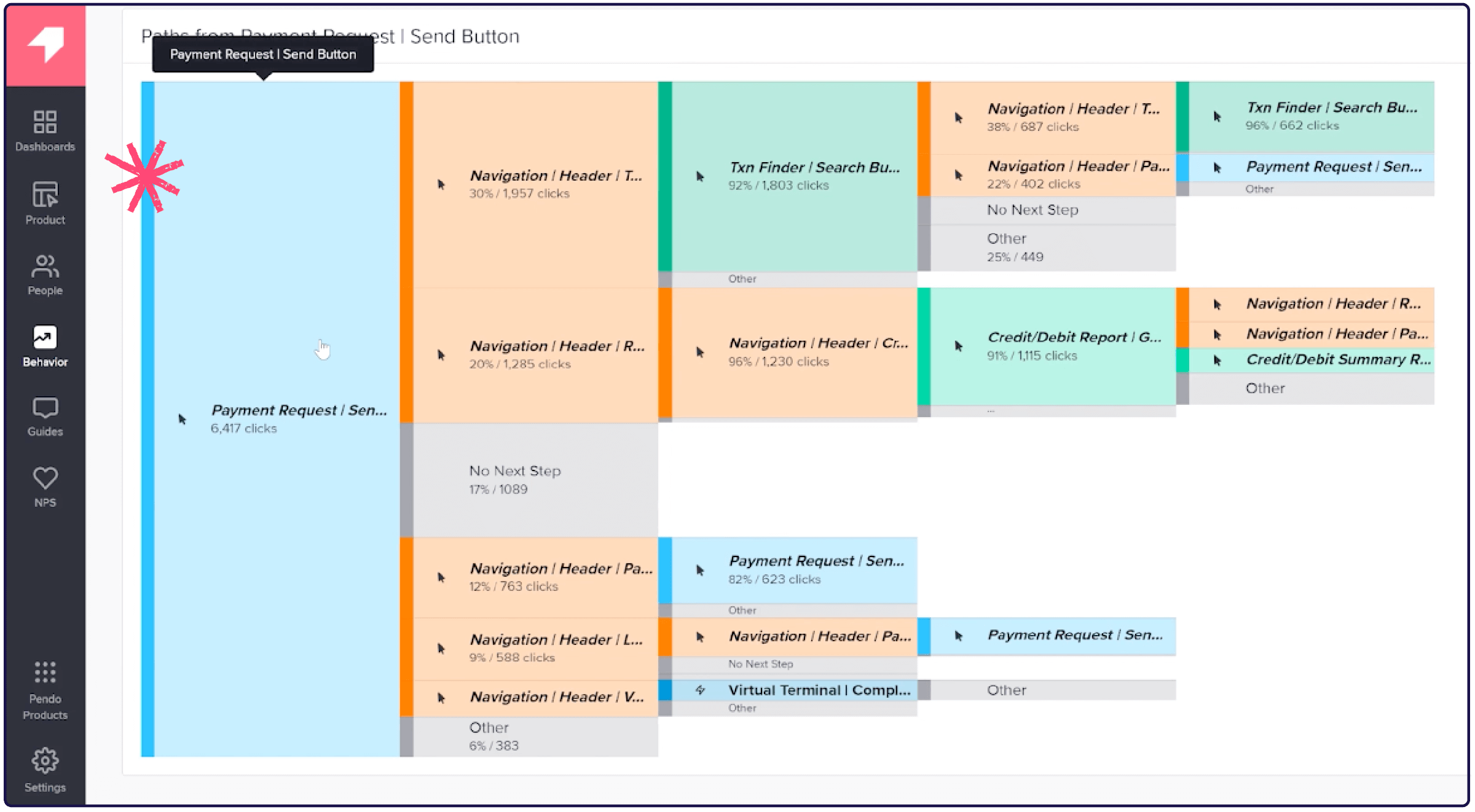From gut feel to data-driven
Although some product managers might think they know what customers need from their product, relying on gut instinct can only get you so far. With Pendo, product usage data reveals exactly how users are navigating your product so you can work to make that experience even better.
In the past, product decisions at Global Payments were often based on gut feel or conversations with a few customers. Now, Pendo helps make data easily available for teams across the organization. “With Pendo, I’m able to answer a lot of questions about our users, and even segment by customer type or user role to see how product usage differs for each group,” said Chad Parker, manager of product ownership at Global Payments.
This access to data proved particularly valuable at the beginning of the pandemic when Global Payments built a new feature after hearing that their customers (business owners) lacked an easy way to collect payments when they were no longer operating in-person. This new functionality, Payment Request, allowed merchants to send a request to customers via text message or email so they could pay without interacting with anyone or touching another device.
A few months after launch, the product team turned to Pendo to see how the Payment Request feature was being used.
The (user) path to success
Parker utilized Paths to look at what users were doing before and after accessing the Payment Request functionality. The data showed that after sending a payment request, 50% of users were immediately searching for their transaction (often multiple times) to see if it went through. The rest of the users either didn’t take another action, or proceeded to send another payment request.
This relatively simple data point gave the product team a major insight. They had built the ability to send a payment request, but didn’t provide a way to notify customers when their payment had been completed. “We were able to see that we really needed a way to make this workflow easier,” Parker noted.

Being able to see how users interacted with their new feature allowed Global Payments to continue iterating and improving the customer experience—and do so quickly. Now, the product team is building the ability to receive a notification or show recent transactions right after making a payment request, so customers will be able to easily see whether their requests have been paid.
Product data is also particularly valuable as Global Payments works to consolidate two products after undergoing a merger in 2020. Since a lot of discussions center around whether they should move a feature over from product A to product B, they can go into Pendo and see what’s being used (and what’s not being used) to determine what should exist in the combined platform.
In one case, the support team came to product with a request to include a certain feature in the new portal, but when they looked at the data, only 200 customers out of 25,000 were actually using the feature. Parker explained, “Pendo definitely arms us with the information we need to have more productive conversations with support.”



